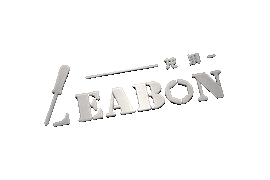Woodworking Accessories Tips
Have you ever encountered these edge banding quality problems? How to get better edge banding quality?
Edge banding is an important part of the production process of furniture, cabinets and other wooden products. Its quality directly affects the aesthetics and durability of the products. However, in actual operation, many factories will encounter various edge banding quality problems, such as edge running and edge bursting. These problems not only affect the quality of the products, but also increase the cost of maintenance and rework during the production process. Therefore, improving the quality of edge banding has become an urgent problem to be solved in the panel manufacturing industry.

01 Common edge banding problems
(1) Scraper
When the height of the plate does not match the height of the pressure beam set by the edge banding machine, the edge banding is prone to scraper phenomenon. When a scraper problem occurs, first check whether the plate is swollen, and then check whether the scraper unit is working properly. If the plate and processing components are in normal condition, check whether there are any rubber blocks attached to the slider and pressure wheel, and clean them in time. If there are no problems, check whether the tool (scraper and flat blade) is loose and whether the tool position is adjusted in place.

2) Uneven ends
The reasons for uneven ends may be that the cross-grain edge banding strip is too long, causing gaps and glue to be hidden in the along-grain edge banding strip, or the sawing unit is unstable and causes bad cutting, uneven cutting, protrusion, etc.
For the phenomenon of uneven ends, first confirm whether the problem is in the front saw or the rear saw, whether it is cutting the board or the edge band has a large margin. After finding the cause, make corresponding adjustments to the sawing unit.
(3) Poor edge banding
There are two main possibilities for poor edge banding. One is poor glue supply, resulting in the edge banding strip not being glued. In this case, the edge banding strip of the first board can be disassembled to check whether there is glue on the board; the other is that the glue spraying unit is poor, resulting in the edge banding strip being glued or not being glued. By checking the glue spraying port and clearing the blockage before starting the machine, this situation can be avoided to a great extent.

(4) Edge running
The edge banding strip does not match the height of the plate or the edge banding strip is not pressed tightly, which may cause edge running defects. It is necessary to check whether the edge banding strip size is matched, whether the edge banding pulley is normal, and whether the edge banding strip is stuck.
(5) Edge bursting
If the plate has edge bursting, first check whether the original plate has edge bursting problems, and second test whether the milling cutter will cause edge bursting.


02 Improve edge quality
The factors that affect edge quality are mainly edge equipment, raw materials, edge technology and other factors. It is urgent to analyze the reasons and propose new quality control measures.
Quality control measures for edge equipment include: 1. Standardize the equipment inspection management system, clarify the specific methods of inspection for different edge machines, and deal with problems found during the inspection process in a timely manner; 2. Establish standards for equipment maintenance and maintenance, and regularly inspect and repair equipment according to the standards.

Quality control measures for raw materials include: 1. Formulate raw material control standards and material inspection systems; 2. Manage raw material suppliers well; 3. Set different melt temperatures according to seasonal changes; 4. Formulate handling and storage standards and strengthen protection during the process.
The quality control measures for edge banding process methods include: 1. Formulate edge banding quality standards as a technical basis; 2. Require operators to perform standardized operations; 3. Implement the first-piece inspection system; 4. Implement the random inspection system.

03 Last words
The emergence of edge banding quality problems is often caused by negligence in multiple links such as equipment, raw materials or processes. For these common problems, we can effectively improve the edge banding quality by formulating standards, standardizing operations, strengthening equipment maintenance and care, optimizing raw material selection and management, and improving process methods.
However, relying solely on these measures is not enough to completely solve the edge banding quality problem. In actual operation, we also need to constantly summarize experience, conduct in-depth analysis of the problems encountered, and adjust and optimize solutions in a timely manner.
